Your age is something to be proud of. Experience earned and lessons learned can offer fresh perspectives on life, beauty, and what it means to take care of yourself. It’s the definition of well-aging: appreciating the best parts of getting a little bit older (and a lot wiser).
It’s also a journey — one that we’re all on together. Learn what to expect from your skin as you hit life’s milestones and get real answers from our colleagues and industry experts on: When will I start getting wrinkles? Why is my skin getting drier as I age? What happens when my skin starts making less collagen?
Questions are bound to pop up as the years go by, but one thing always rings true: your skin will change as much as you do, and evolving your skincare routine is key.
Let’s get started.
Table of Contents
What causes skin aging?
To understand what happens to your skin as you grow older, let’s start by explaining how its aging process works.
First thing to consider? The three main layers of your skin (the epidermis, dermis, and hypodermis) are linked by connective tissues. As you age, these tissues slowly lose firmness and elasticity, which makes the skin thinner and more flaccid. Your skin also loses some of its natural ability to renew and regenerate itself.
Throughout the years, your skin is also subject to oxidation — a process caused by internal and external factors, such as sleep, diet, and stress, that can accelerate signs of skin aging. But overall, 80% of premature skin aging is due to solar radiation.
Well-aging is the commitment to authentic beauty achieved through healthy, happy skin. Where to start? Get to know your skin at every age and discover how to care for its unique needs through the decades.
And the journey begins
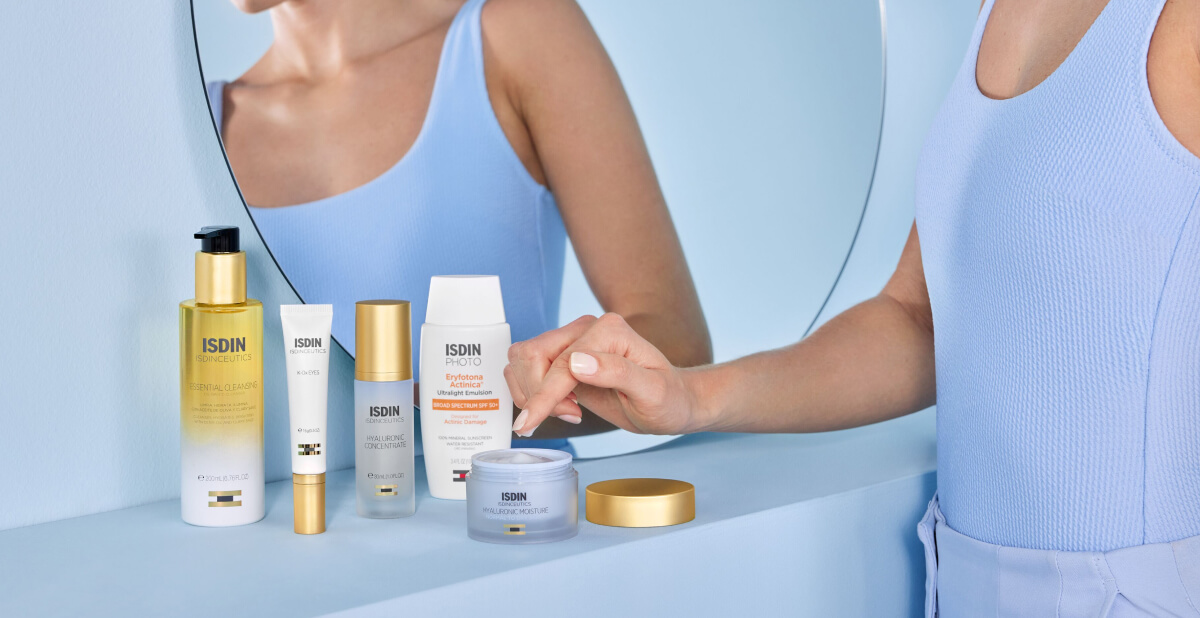
Keep this in mind at all times: no matter how old (or young) you are, your skin will always need basic care: cleansing, hydration, and last but not least, sun protection. These three steps will help you to take care of and repair your skin every day.
How does cleansing benefit your skin?
Day in and day out, your skin battles against dirt, excess oil, pollution, and makeup. Cleansing is the unsung hero in this daily fight, acting to help erase impurities from your skin.
Moreover, clean skin can help enhance the benefits of your skincare products, ensuring that potent ingredients penetrate deeply. Most importantly, a regular cleansing routine helps maintain your skin’s pH balance, an essential equilibrium that keeps your skin barrier healthy and capable of defending itself against harmful external agents.
How does hydration benefit your skin?
Your skin not only defends itself against external factors but also faces internal challenges, such as transepidermal water loss (TEWL). This natural process regulates the amount of water that evaporates from your skin each day. When your skin barrier is compromised, you can lose too much water, leading to dehydration.
That’s where moisturizing skincare products come in. Hydration is crucial to balance TEWL and keep your skin looking and feeling youthful, smooth, and supple. Hydrating products, like moisturizers, help to trap moisture in the skin, maintaining its elasticity and plumpness.
How does sun protection benefit your skin?
Remember: UV rays can reach and penetrate the deeper layers of your skin even on cloudy days and indoors. The consequences? Too much solar radiation can cause both short-term and long-term damage. You may avoid sunburns by seeking shade (great work there!), but what about the signs of premature aging or the risk of developing skin cancer? Minimize your chances with daily sunscreen use.
Also, keep in mind that your skin has a memory of its own: if you overlook skincare in your 20s, the consequences may suddenly pop up in your 40s. That’s why it’s best to start looking after your skin as soon as possible. As you age, you can work to upgrade your routine as your skin goals change.
Join us as our experts walk us through the different decades of their lives, sharing their personal skin experiences and what well-aging means to them. Let’s dive in.

Your skin in your 20s
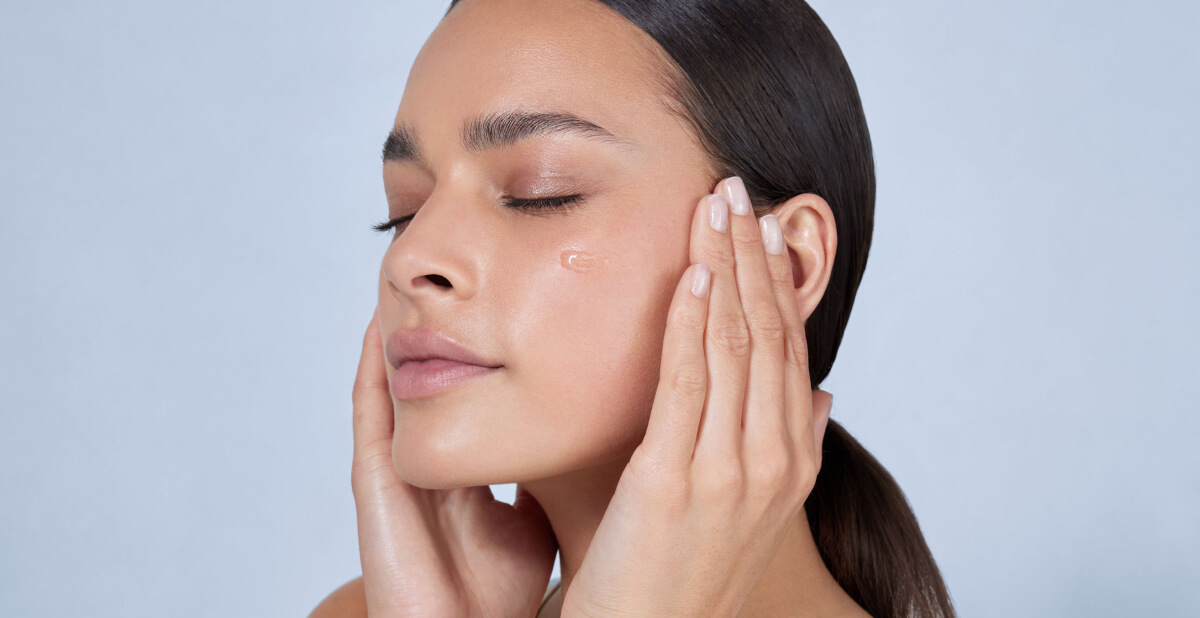
You’re still figuring things out, enjoying your free time (inside a busy schedule), and turning everyday life into an adventure. In this decade, your skin also goes through its “golden years”: collagen and elastin production is high so skin maintains its elasticity and firmness, and acne tends to decrease.
What the experts say
“The time to help prevent wrinkles is in one’s 20s. Later in life, it’s more about correcting.” Alessandro De Luca, Medical Marketing Specialist, is set on how important it is to take care of the skin during this time, as “it’s when changes begin.” And what are those changes? “Collagen production begins to decrease — albeit very slightly — and hydration and barrier function reduce, which can lead to dryness.”
Dryness was one of the first things Alessandro noticed on his own skin. So, he emphasizes the importance of consistently hydrating to add extra plumpness and downplay signs of skin aging in the future. Here, hyaluronic acid is your best ally. Find it in serums, creams, or even sunscreen — your skin will thank you later!
Discover the perfect skincare routine for your 20s

Your skin in your 30s
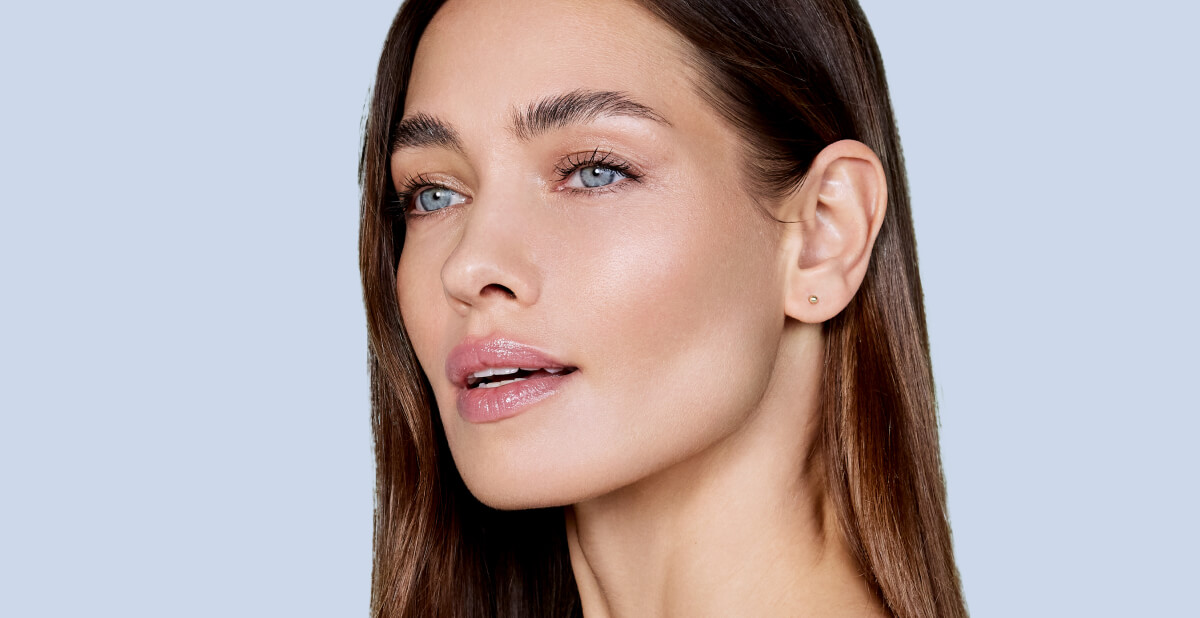
You’re still unstoppable, but your skin might not be quite as resilient. As your responsibilities grow, so can stress levels! Without realizing it, your skin may start to look more tired or less radiant. Why? Because after 30 (don’t worry, it won’t happen on your birthday), your skin’s regenerative capacity decreases drastically. And slower turnover can leave your skin dehydrated and more prone to showing fine lines.
What the experts say
“The first thing I noticed? More pronounced expression lines,” shares Alba Villanueva, ISDIN Dermalab Manager. Now’s the time to add products to your daily routine that focus on both preventing and repairing the first signs of skin aging. Take eye creams for instance — if you’ve noticed a few new crinkles or crow’s feet, you can help revitalize your look with targeted formulas.
Alba also echoes Alessandro’s perspective, “Serums and creams with hyaluronic acid are perfect for deeply hydrating the skin.” Another pro tip? Never forget the importance of a deep cleanse: “I can’t live without my cleansing oil anymore!” And of course, a broad spectrum sunscreen every day.
Discover the perfect skincare routine for your 30s

Your skin in your 40s
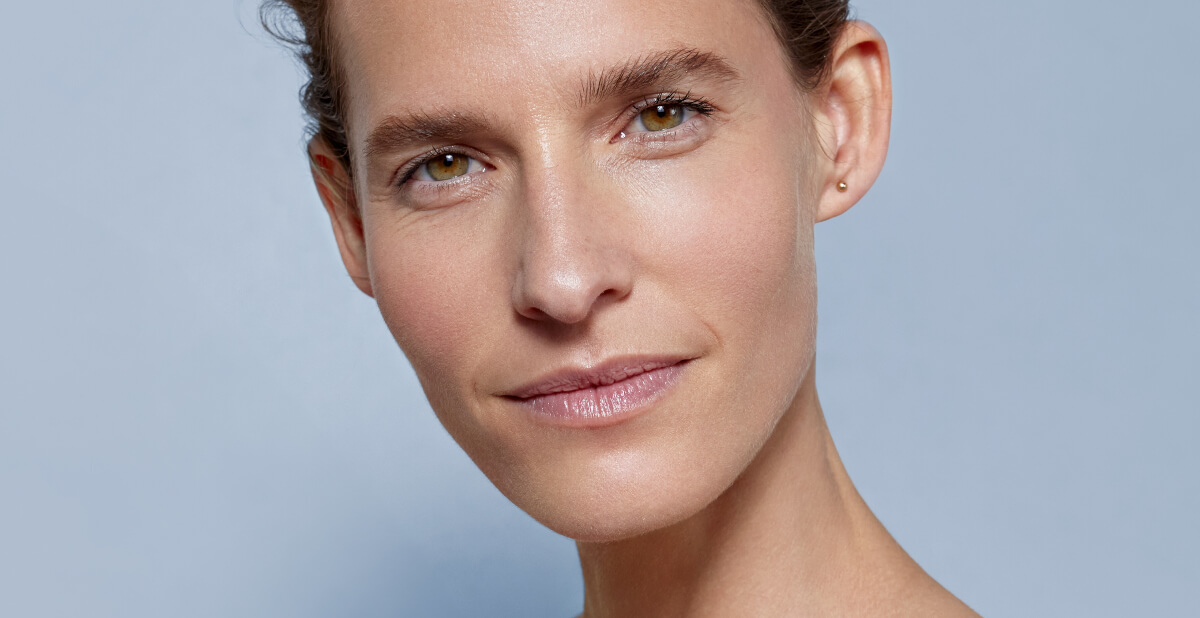
This is the time when you realize that there’s no such thing as eternal youth, and you’re not mad about it. You’ve got the experience and maturity to make the most out of life. But how does your skin feel about this decade? As you enter your 40s, your skin may start showing the first signs of sagging due to a gradual loss of elastin and collagen.
Another point to consider? Some women go through menopause during this time, which comes with hormonal changes that can also intensify skin changes.
What the experts say
“The first thing I noticed was fragility. For example, my skin became more sensitive to seasonal changes,” explains Greg Cameron, ISDIN Brand Guardian Manager. “And my expression lines —from all the good laughs through the years — became more apparent. My skin also likes to remind me about all those summers spent sunbathing on Mediterranean beaches,” he emphasizes. “You can’t forget that skin has a memory.”
In line with all the changes your skin goes through in this decade, a question might have crossed your mind: How can I reduce the look of my wrinkles at age 40? You’re not alone. As Greg says, “Now, I have to be more careful about oxidative damage caused by daily stressors.”
This points to antioxidants and retinal as the new essentials in your skincare routine. “I can’t go without Flavo-C Ultraglican in the mornings, an antioxidant serum that revitalizes and brightens. I also use Retinal Advanced at night, the perfect ally to visibly reduce wrinkles thanks to its formula with retinaldehyde and bakuchiol,” he shares.
Discover the perfect skincare routine for your 40s

Your skin in your 50s and beyond
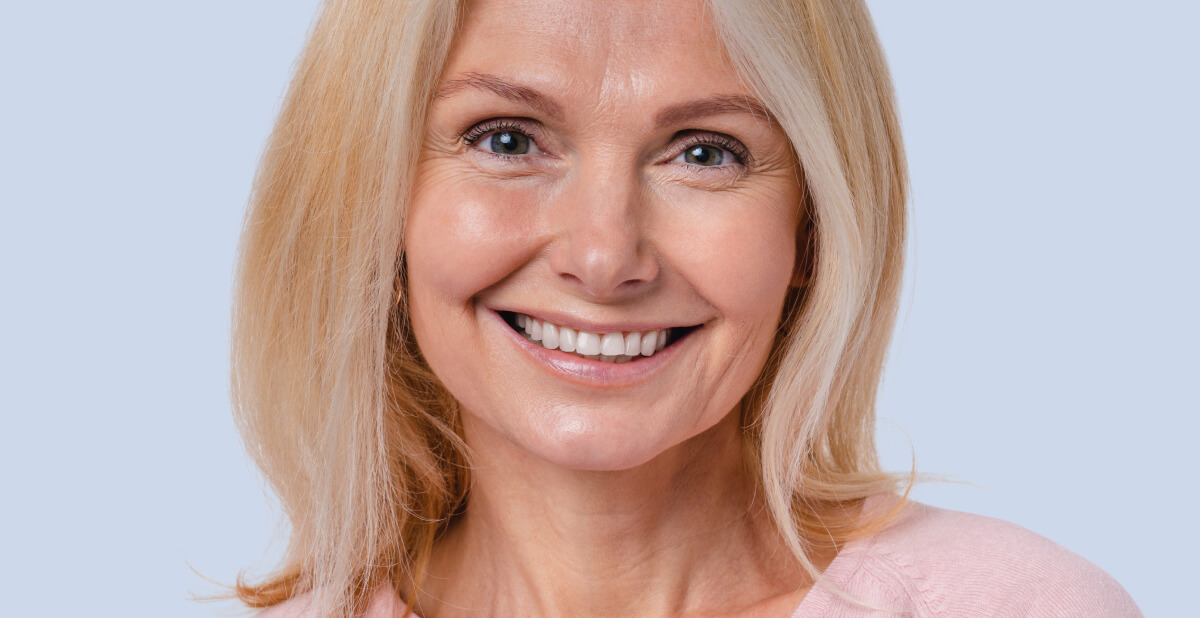
You create more and more memories over the years, and the same happens with your skin. As you slow down and prioritize self-care, you’ll inevitably notice some changes in your skin. Dynamic wrinkles make themselves known and now your face reflects your emotions — including all the times you’ve laughed and how you’ve expressed yourself over the years.
It’s time to embrace it all.
What the experts say
“Dry skin, sagging, deep wrinkles, sun spots… you become more aware of how important it is to lead a healthy lifestyle and to follow a daily skincare routine,” explains Georgina Logusso, Corporate Medical Marketing Manager.
Now’s the time to focus on making your skin look and feel its best, rather than just slowing down the signs of aging. Opt for hydrating creams featuring ingredients like peptides and carnosine to help fight gravity’s effects on your skin. Additionally, it’s essential to include two key steps in your routine, as Georgina tells us, “Serums designed to prevent and treat dark spots, and specific sun protection with UV-damage-repairing ingredients.”
Discover the perfect skincare routine for your 50s & up
Eternal youth
As you continue to age, feeling good on the outside and taking care of your skin is important, but feeling young is something that comes from within. The concept of well-aging invites you to enjoy every stage, finding happiness in the little things and joy in every wrinkle. So the question isn’t how can I get younger-looking skin? but rather, what can I do to continue to take care of my skin?
Be consistent with your routine, use products that provide the skin with what it’s no longer able to produce for itself, and always, always, use sunscreen. You can’t change the past (and why would you want to?), but you can help address and avoid further skin damage. Because healthy skin is beautiful skin, at any age.
Reference:
Data on file. ISDIN Corp. 2023. Morristown, NJ
Behind the blog:
Article written and reviewed by:
Our namesake embodies the spirit of embracing life and all its wonder. As wellness journalists, we explore topics that invigorate the senses and keep curiosity alive. We believe that glowing skin is the result of a healthy body and mind. Weaving beauty with science, we aim to inspire you to live young at every age.

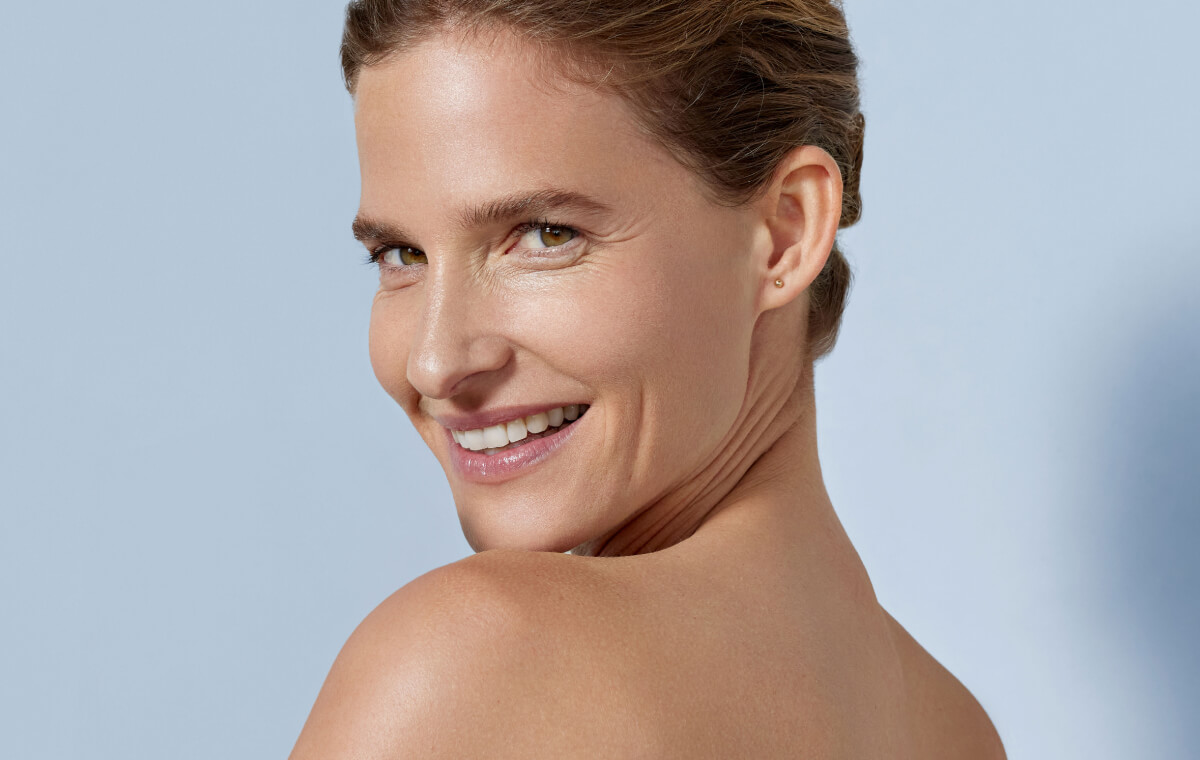
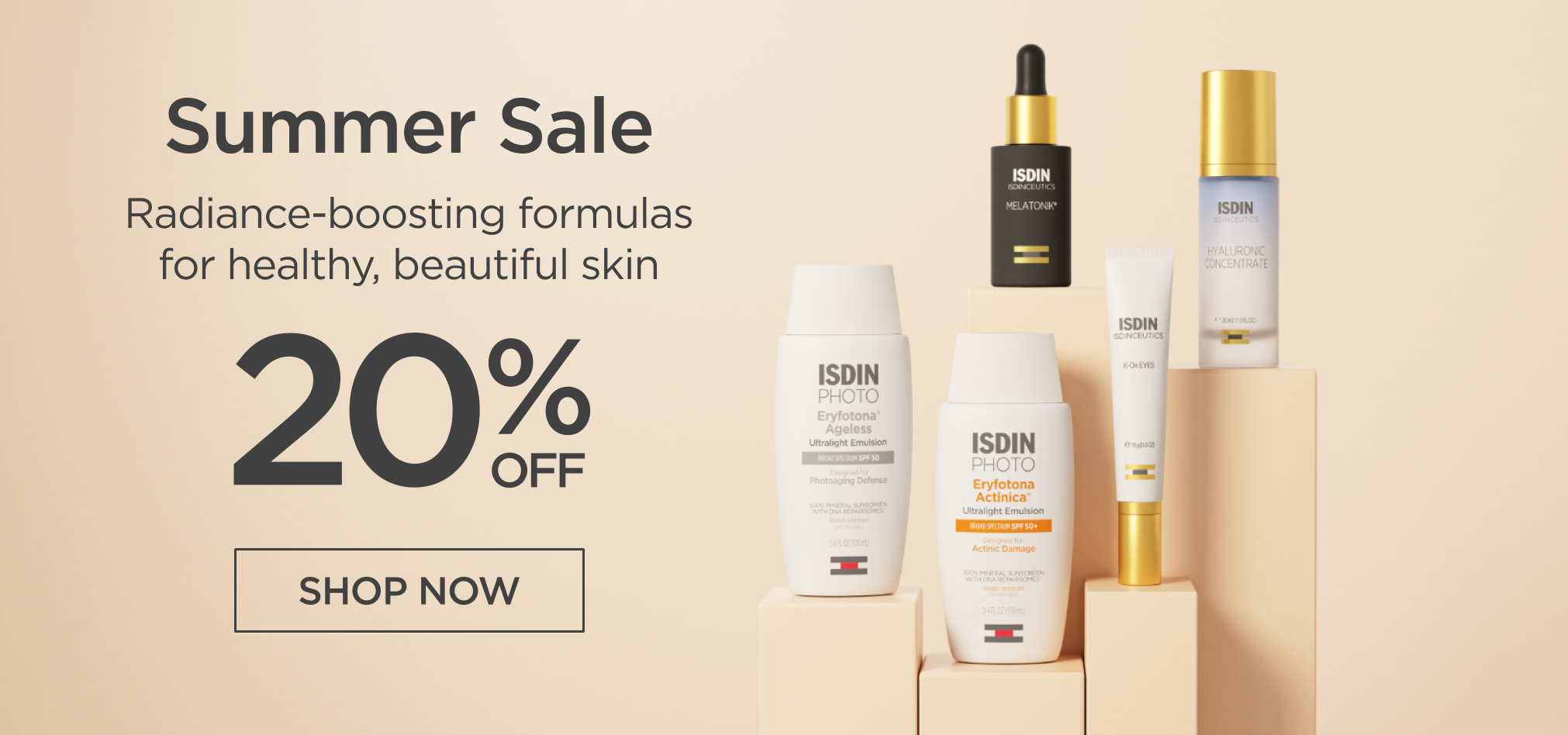

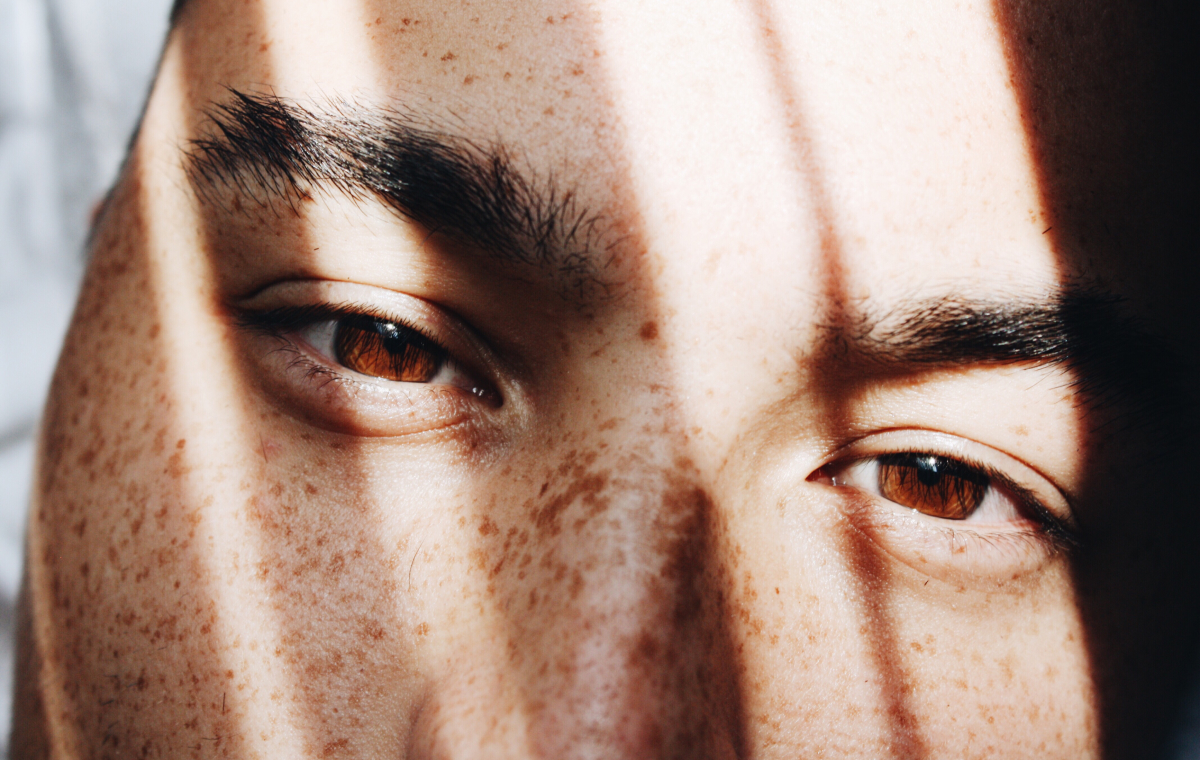

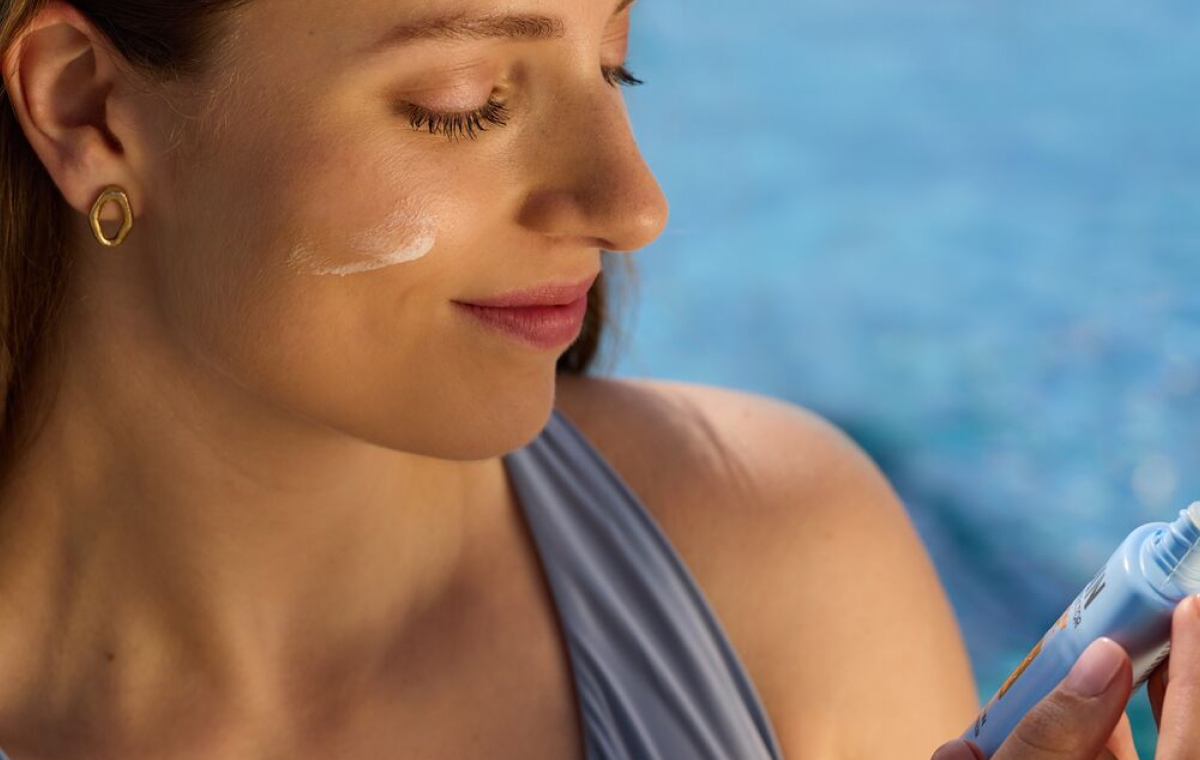
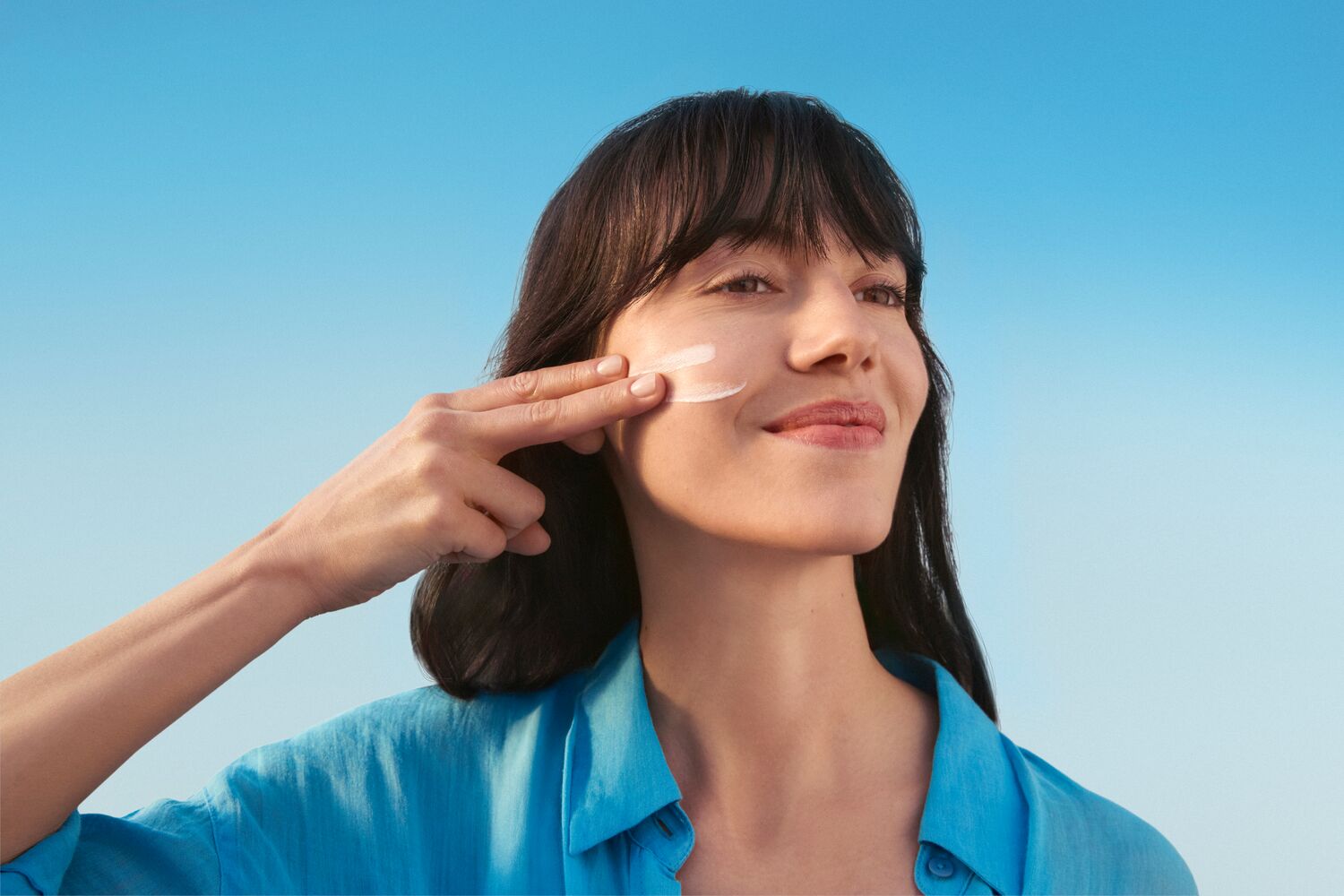
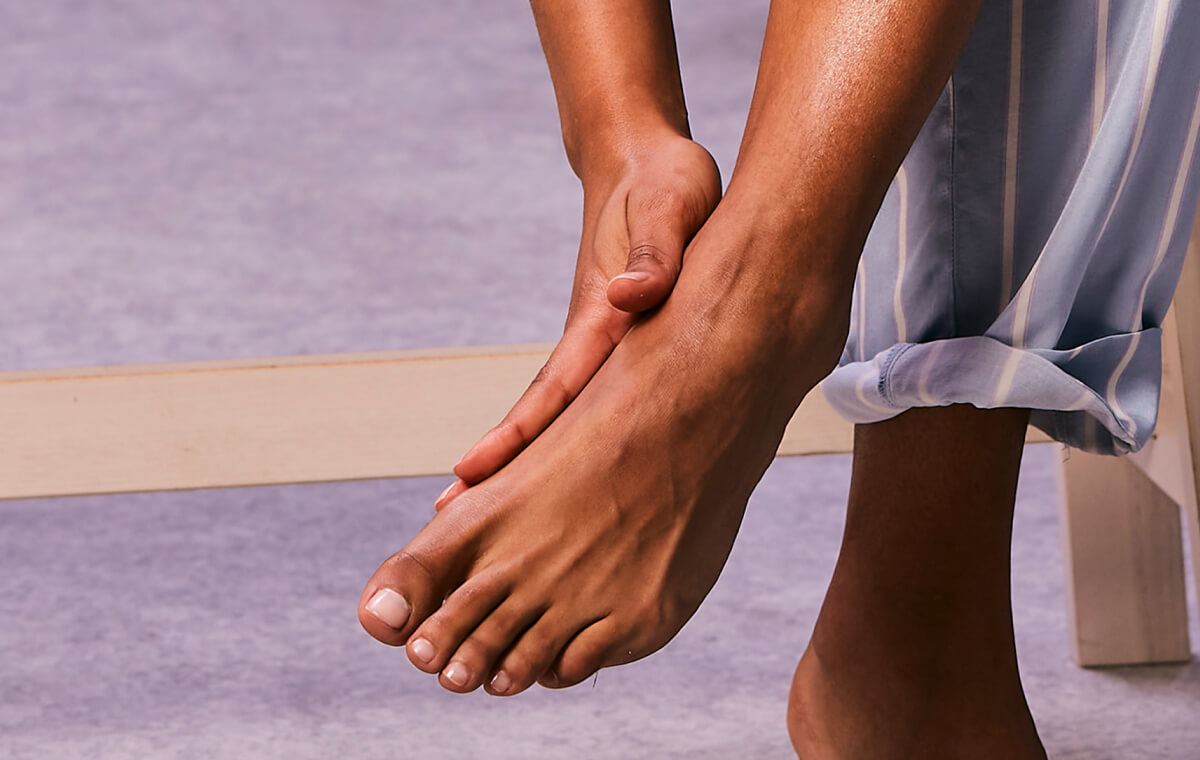
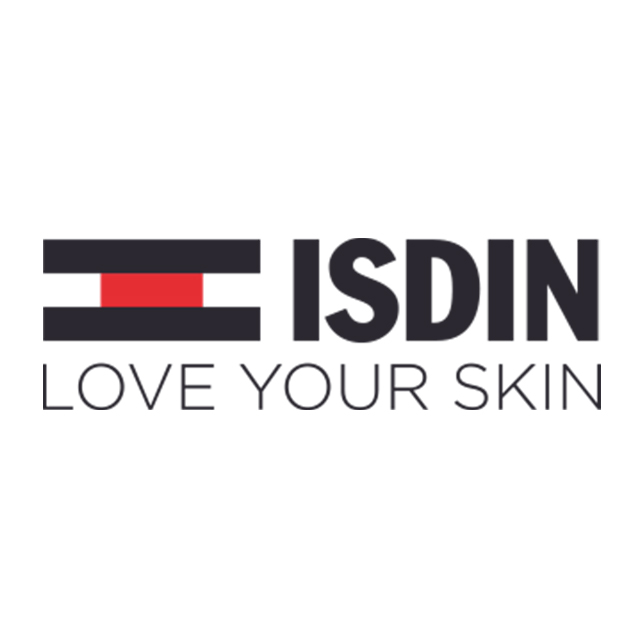

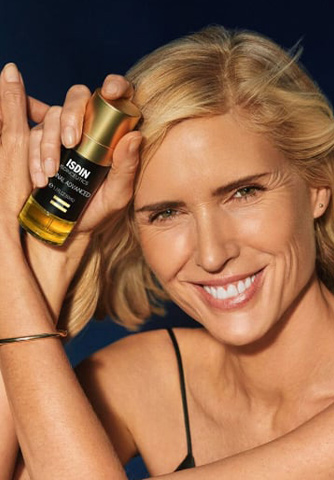
I’m looking forward to seeing improvement in my skin.
I am 68 and have hyperpigmentation, dark circles and sagging jowls. I hope your products will help me with these issues.